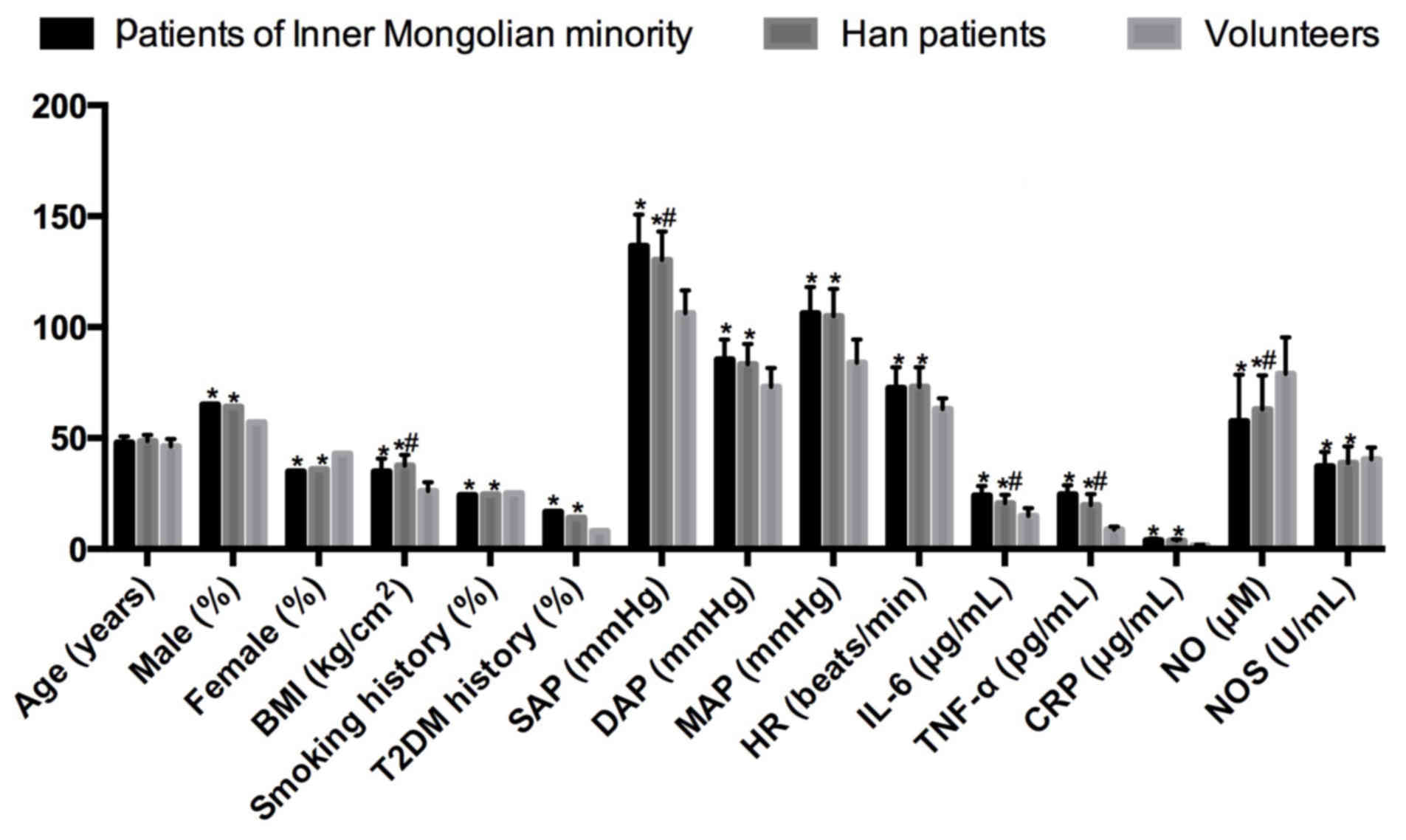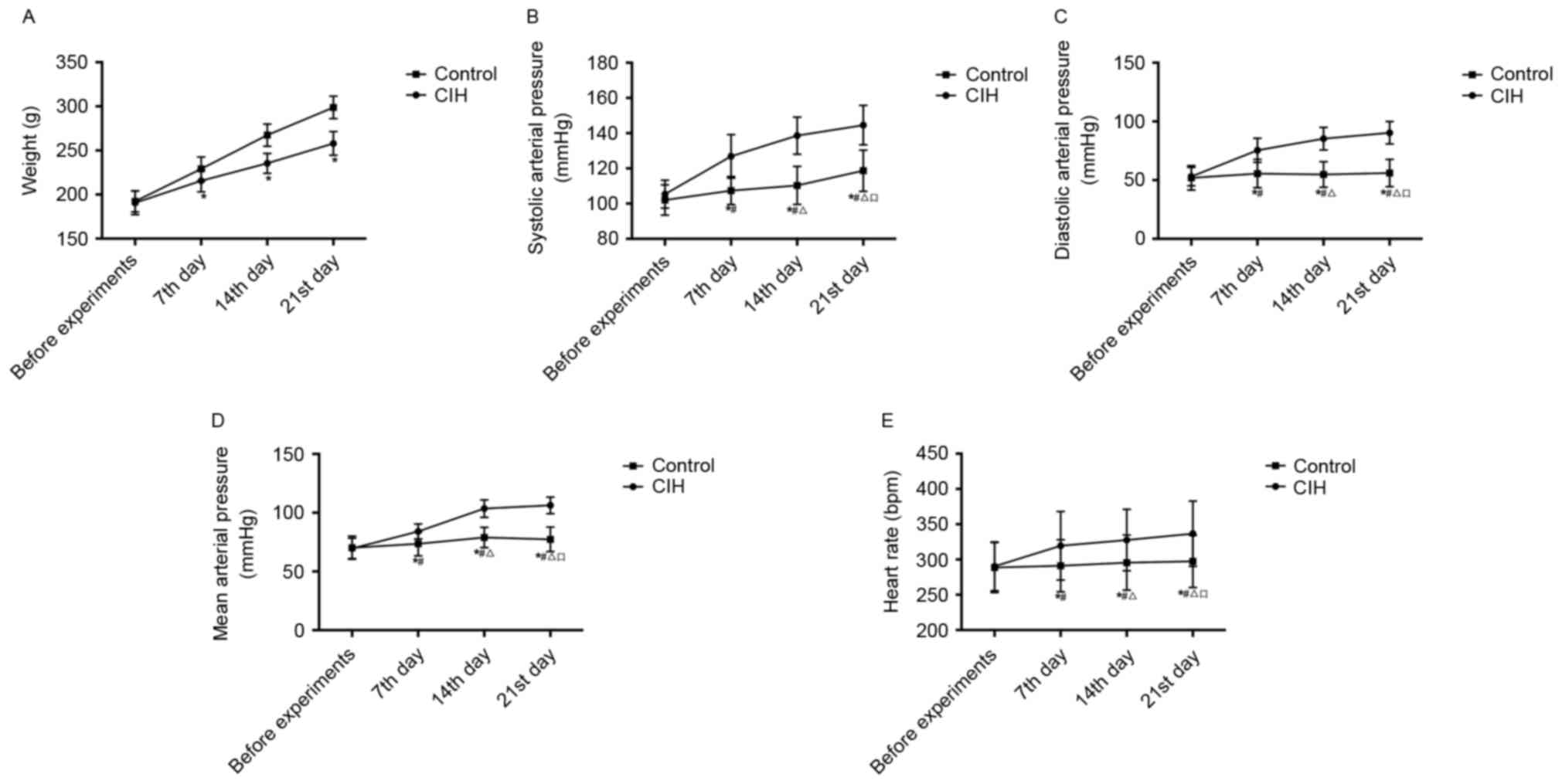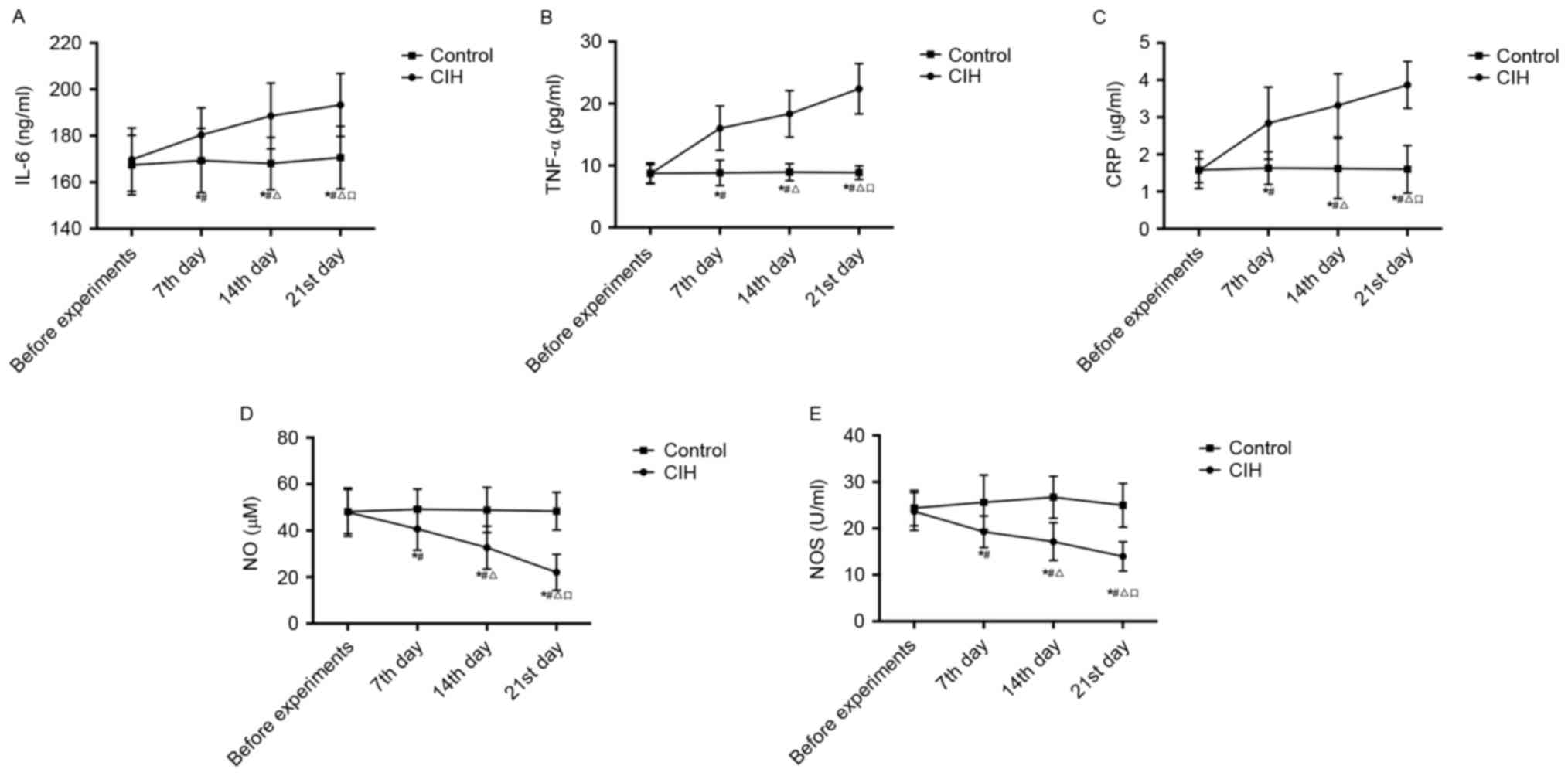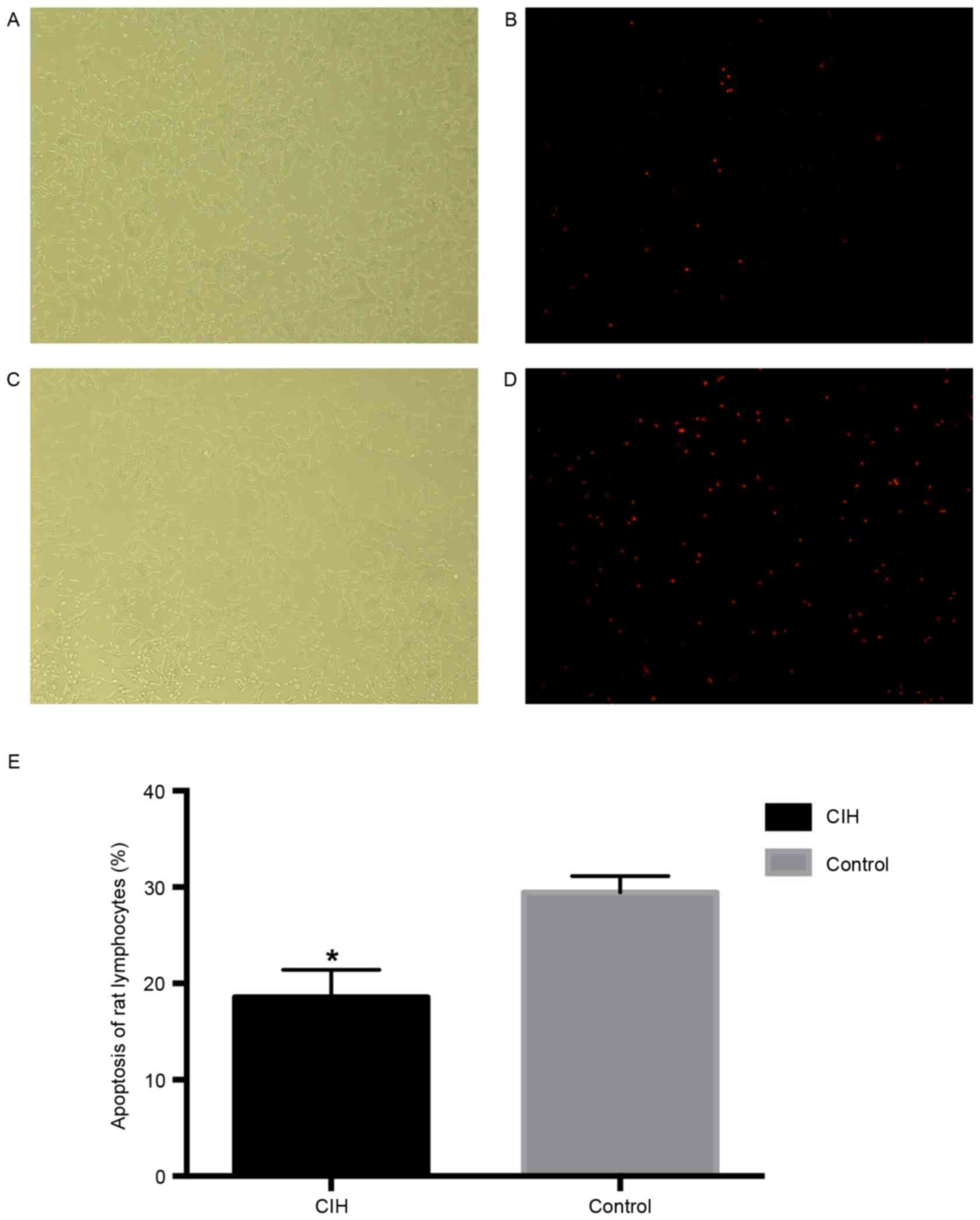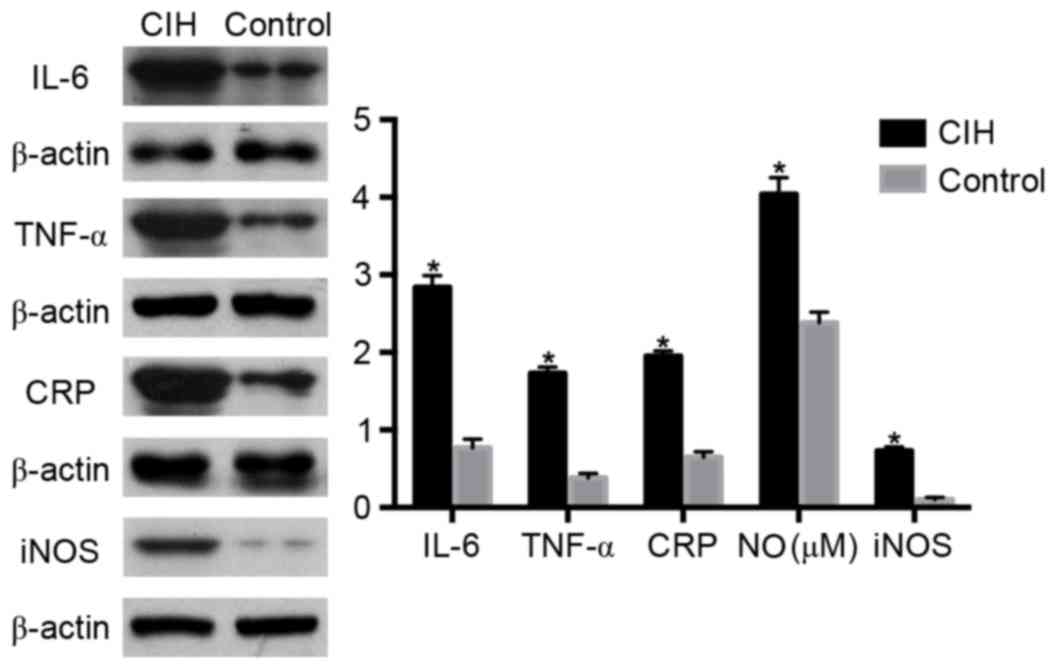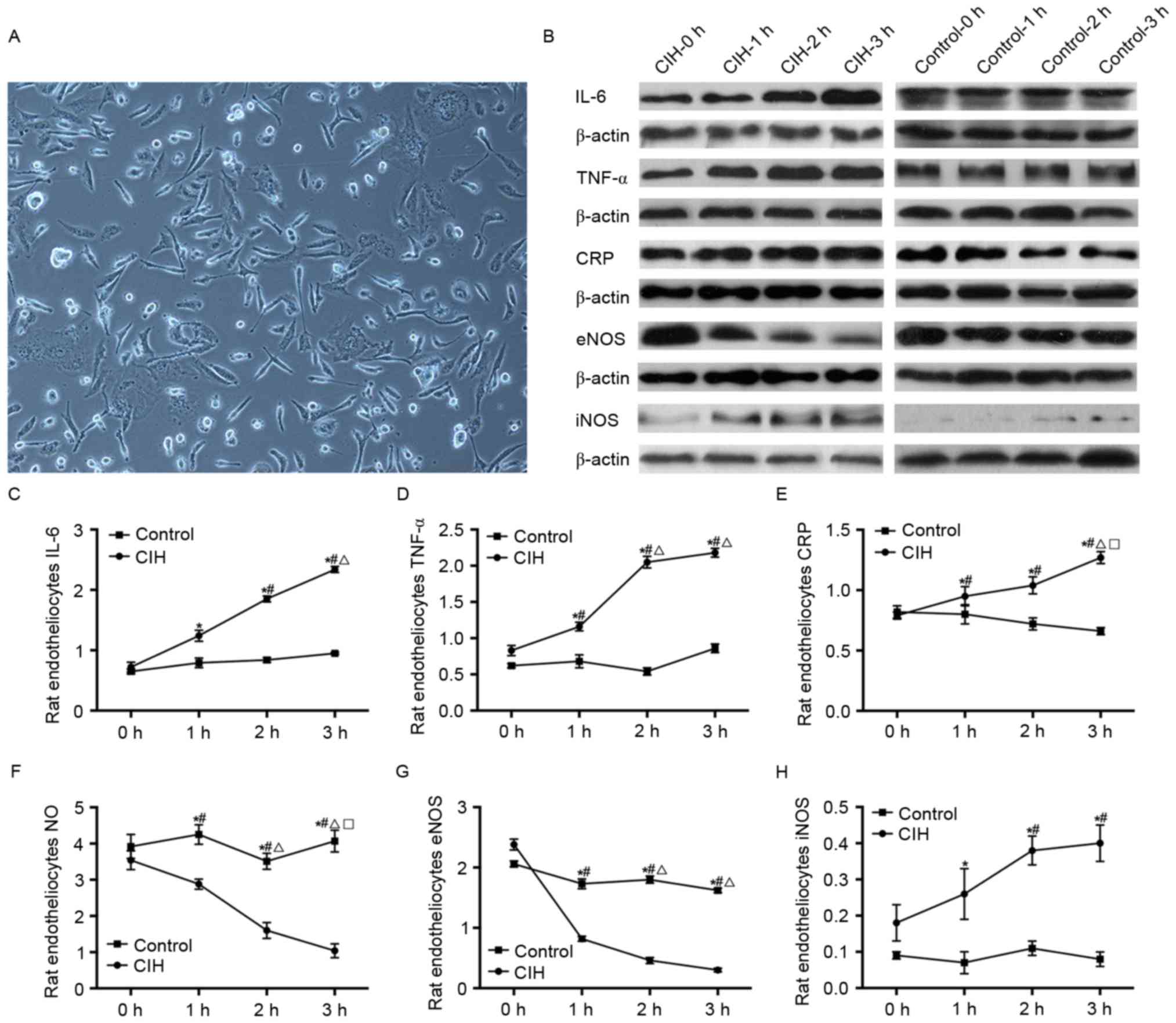|
1
|
Caples SM, Gami AS and Somers VK:
Obstructive sleep apnea. Ann Intern Med. 142:187–197. 2005.
View Article : Google Scholar : PubMed/NCBI
|
|
2
|
Khayat R, Patt B and Hayes D Jr:
Obstructive sleep apnea: The new cardiovascular disease. Part I:
Obstructive sleep apnea and the pathogenesis of vascular disease.
Heart Fail Rev. 14:143–153. 2009. View Article : Google Scholar : PubMed/NCBI
|
|
3
|
Dempsey JA, Veasey SC, Morgan BJ and
O'Donnell CP: Pathophysiology of sleep apnea. Physiol Rev.
90:47–112. 2010. View Article : Google Scholar : PubMed/NCBI
|
|
4
|
Fletcher EC: The relationship between
systemic hypertension and obstructive sleep apnea: Facts and
theory. Am J Med. 98:118–128. 1995. View Article : Google Scholar : PubMed/NCBI
|
|
5
|
Das AM and Khayat R: Hypertension in
obstructive sleep apnea: Risk and therapy. Expert Rev Cardiovasc
Ther. 7:619–626. 2009. View Article : Google Scholar : PubMed/NCBI
|
|
6
|
Sala-Mercado JA, Spranger MD, Abu-Hamdah
R, Kaur J, Coutsos M, Stayer D, Augustyniak RA and O'Leary DS:
Attenuated muscle metaboreflex-induced increases in cardiac
function in hypertension. Am J Physiol Heart Circ Physiol.
305:H1548–H1554. 2013. View Article : Google Scholar : PubMed/NCBI
|
|
7
|
Ito T, Ishikawa E, Fujimoto N, Okubo S,
Ito G, Ichikawa T, Nomura S and Ito M: Effects of aliskiren on
blood pressure and humoral factors in hypertensive hemodialysis
patients previously on angiotensin II receptor antagonists. Clin
Exp Hypertens. 36:497–502. 2014. View Article : Google Scholar : PubMed/NCBI
|
|
8
|
Chiasson VL, Munshi N, Chatterjee P, Young
KJ and Mitchell BM: Pin1 deficiency causes endothelial dysfunction
and hypertension. Hypertension. 58:431–438. 2011. View Article : Google Scholar : PubMed/NCBI
|
|
9
|
Morishita R: Is vascular endothelial
growth factor a missing link between hypertension and inflammation?
Hypertension. 44:253–254. 2004. View Article : Google Scholar : PubMed/NCBI
|
|
10
|
Mikami S, Nihira S and Takemori K: The
construction of vascular information data base for efficient blood
pressure measurement. Hirosaki Med J. 41:282–289. 1989.
|
|
11
|
Peng Y, Kline DD, Dick TE and Prabhakar
NR: Chronic intermittent hypoxia enhances carotid body
chemoreceptor response to low oxygen. Adv Exp Med Biol. 499:33–38.
2001. View Article : Google Scholar : PubMed/NCBI
|
|
12
|
Karamanlı H, Özol D, Ugur KS, Yıldırım Z,
Armutçu F, Bozkurt B and Yigitoglu R: Influence of CPAP treatment
on airway and systemic inflammation in OSAS patients. Sleep Breath.
18:251–256. 2014. View Article : Google Scholar : PubMed/NCBI
|
|
13
|
Svensson M, Venge P, Janson C and Lindberg
E: Relationship between sleep-disordered breathing and markers of
systemic inflammation in women from the general population. J Sleep
Res. 21:147–154. 2012. View Article : Google Scholar : PubMed/NCBI
|
|
14
|
Kaviraj B, Bai SC, Liang SU, Zheng XO,
Huang R, Li TP and Xu DL: Effect of obstructive sleep apnea
syndrome on serum C-reactive protein level, left atrial size and
premature atrial contraction. Nan Fang Yi Ke Da Xue Xue Bao.
31:197–200. 2011.PubMed/NCBI
|
|
15
|
Chen J, Zhang J and Chen Y: Relationship
between hs-CRP and obstructive sleep apnea in hypertension
patients. Chin J Integr Med Cardio-/Cerebrovasc Dis. 2012.
|
|
16
|
McNicholas WT: Chronic obstructive
pulmonary disease and obstructive sleep apnea: Overlaps in
pathophysiology, systemic inflammation, and cardiovascular disease.
Am J Respir Crit Care Med. 180:692–700. 2009. View Article : Google Scholar : PubMed/NCBI
|
|
17
|
Jordan W, Cohrs S, Degner D, Meier A,
Rodenbeck A, Mayer G, Pilz J, Rüther E, Kornhuber J and Bleich S:
Evaluation of oxidative stress measurements in obstructive sleep
apnea syndrome. J Neural Transm (Vienna). 113:239–254. 2005.
View Article : Google Scholar : PubMed/NCBI
|
|
18
|
Pawar A, Nanduri J, Yuan G, Khan SA, Wang
N, Kumar GK and Prabhakar NR: Reactive oxygen species-dependent
endothelin signaling is required for augmented hypoxic sensory
response of the neonatal carotid body by intermittent hypoxia. Am J
Physiol Regul Integr Comp Physiol. 296:R735–R742. 2009. View Article : Google Scholar : PubMed/NCBI
|
|
19
|
Lam SY and Leung PS: A locally generated
angiotensin system in rat carotid body. Regul Pept. 107:97–103.
2002. View Article : Google Scholar : PubMed/NCBI
|
|
20
|
Iturriaga R, Villanueva S and Mosqueira M:
Dual effects of nitric oxide on cat carotid body chemoreception. J
Appl Physiol (1985). 89:1005–1012. 2000.PubMed/NCBI
|
|
21
|
Alissa EM and Ferns GA: Functional foods
and nutraceuticals in the primary prevention of cardiovascular
diseases. J Nutr Metab. 2012:5694862012. View Article : Google Scholar : PubMed/NCBI
|
|
22
|
Knox S, Theorell T, Malmberg BG and
Lindqvist R: Stress management in the treatment of essential
hypertension in primary health care. Scand J Prim Health Care.
4:175–181. 1986. View Article : Google Scholar : PubMed/NCBI
|
|
23
|
Resta O, Foschino-Barbaro MP, Legari G,
Talamo S, Bonfitto P, Palumbo A, Minenna A, Giorgino R and De
Pergola G: Sleep-related breathing disorders, loud snoring and
excessive daytime sleepiness in obese subjects. Int J Obes Relat
Metab Disord. 25:669–675. 2001. View Article : Google Scholar : PubMed/NCBI
|
|
24
|
Foster GE, Hanly PJ, Ahmed SB, Beaudin AE,
Pialoux V and Poulin MJ: Intermittent hypoxia increases arterial
blood pressure in humans through a Renin-Angiotensin
system-dependent mechanism. Hypertension. 56:369–377. 2010.
View Article : Google Scholar : PubMed/NCBI
|
|
25
|
Fletcher EC, Lesske J, Qian W, Miller CC
III and Unger T: Repetitive, episodic hypoxia causes diurnal
elevation of blood pressure in rats. Hypertension. 19:555–561.
1992. View Article : Google Scholar : PubMed/NCBI
|
|
26
|
Nanduri J, Peng YJ, Yuan G, Kumar GK and
Prabhakar NR: Hypoxia-inducible factors and hypertension: Lessons
from sleep apnea syndrome. J Mol Med (Berl). 93:473–480. 2015.
View Article : Google Scholar : PubMed/NCBI
|
|
27
|
Palma DT, Philips GM, Arguedas MR, Harding
SM and Fallon MB: Oxygen desaturation during sleep in
hepatopulmonary syndrome. Hepatology. 47:1257–1263. 2008.
View Article : Google Scholar : PubMed/NCBI
|
|
28
|
Drager LF, Jun JC and Polotsky VY:
Metabolic consequences of intermittent hypoxia: Relevance to
obstructive sleep apnea. Best Pract Res Clin Endocrinol Metab.
24:843–851. 2010. View Article : Google Scholar : PubMed/NCBI
|
|
29
|
Kapa S, Kuniyoshi FH Sert and Somers VK:
Sleep apnea and hypertension: Interactions and implications for
management. Hypertension. 51:605–608. 2008. View Article : Google Scholar : PubMed/NCBI
|
|
30
|
Morgan BJ, Crabtree DC, Puleo DS, Badr MS,
Toiber F and Skatrud JB: Neurocirculatory consequences of abrupt
change in sleep state in humans. J Appl Physiol (1985).
80:1627–1636. 1996.PubMed/NCBI
|
|
31
|
Tamisier R, Pépin JL, Rémy J, Baguet JP,
Taylor JA, Weiss JW and Lévy P: 14 nights of intermittent hypoxia
elevate daytime blood pressure and sympathetic activity in healthy
humans. Eur Respir J. 37:119–128. 2011. View Article : Google Scholar : PubMed/NCBI
|
|
32
|
Wan NS, Chen BY, Feng J, Li S, Zhou W,
Zhang Z and Guo R: The effects of chronic intermittent hypoxia on
blood pressure and sympathetic nerve activity in rats. Zhonghua Jie
He He Hu Xi Za Zhi. 35:29–32. 2012.(In Chinese). PubMed/NCBI
|
|
33
|
Levy P, Tamisier R, Arnaud C, Monneret D,
Baguet JP, Stanke-Labesque F, Dematteis M, Godin-Ribuot D, Ribuot C
and Pepin JL: Sleep deprivation, sleep apnea and cardiovascular
diseases. Front Biosci (Elite Ed). 4:2007–2021. 2012.PubMed/NCBI
|
|
34
|
Somers VK, White DP, Amin R, Abraham WT,
Costa F, Culebras A, Daniels S, Floras JS, Hunt CE, Olson LJ, et
al: Sleep apnea and cardiovascular disease: An American heart
association/American college of cardiology foundation scientific
statement from the American hear association council for high blood
pressure research professional education committee, council on
clinical cardiology, stroke council, and council on cardiovascular
nursing. J Am Coll Cardiol. 52:686–717. 2008. View Article : Google Scholar : PubMed/NCBI
|
|
35
|
Karamanlı H, Özol D, Ugur KS, Yıldırım Z,
Armutçu F, Bozkurt B and Yigitoglu R: Influence of CPAP treatment
on airway and systemic inflammation in OSAS patients. Sleep Breath.
18:251–256. 2014. View Article : Google Scholar : PubMed/NCBI
|
|
36
|
Svensson M, Venge P, Janson C and Lindberg
E: Relationship between sleep-disordered breathing and markers of
systemic inflammation in women from the general population. J Sleep
Res. 21:147–154. 2012. View Article : Google Scholar : PubMed/NCBI
|
|
37
|
Rus A, Del Moral ML, Molina F and Peinado
MA: Upregulation of cardiac NO/NOS system during short-term hypoxia
and the subsequent reoxygenation period. Eur J Histochem.
55:e172011. View Article : Google Scholar : PubMed/NCBI
|
|
38
|
Ren W, Yang X, Jiang X, Li Z and Zhang Z:
Chronic hypoxia and exercise training affect the NO content and NOS
activity of rat skeletal muscle: Original research article. Int
SportMed J. 11:244–257. 2010.
|



